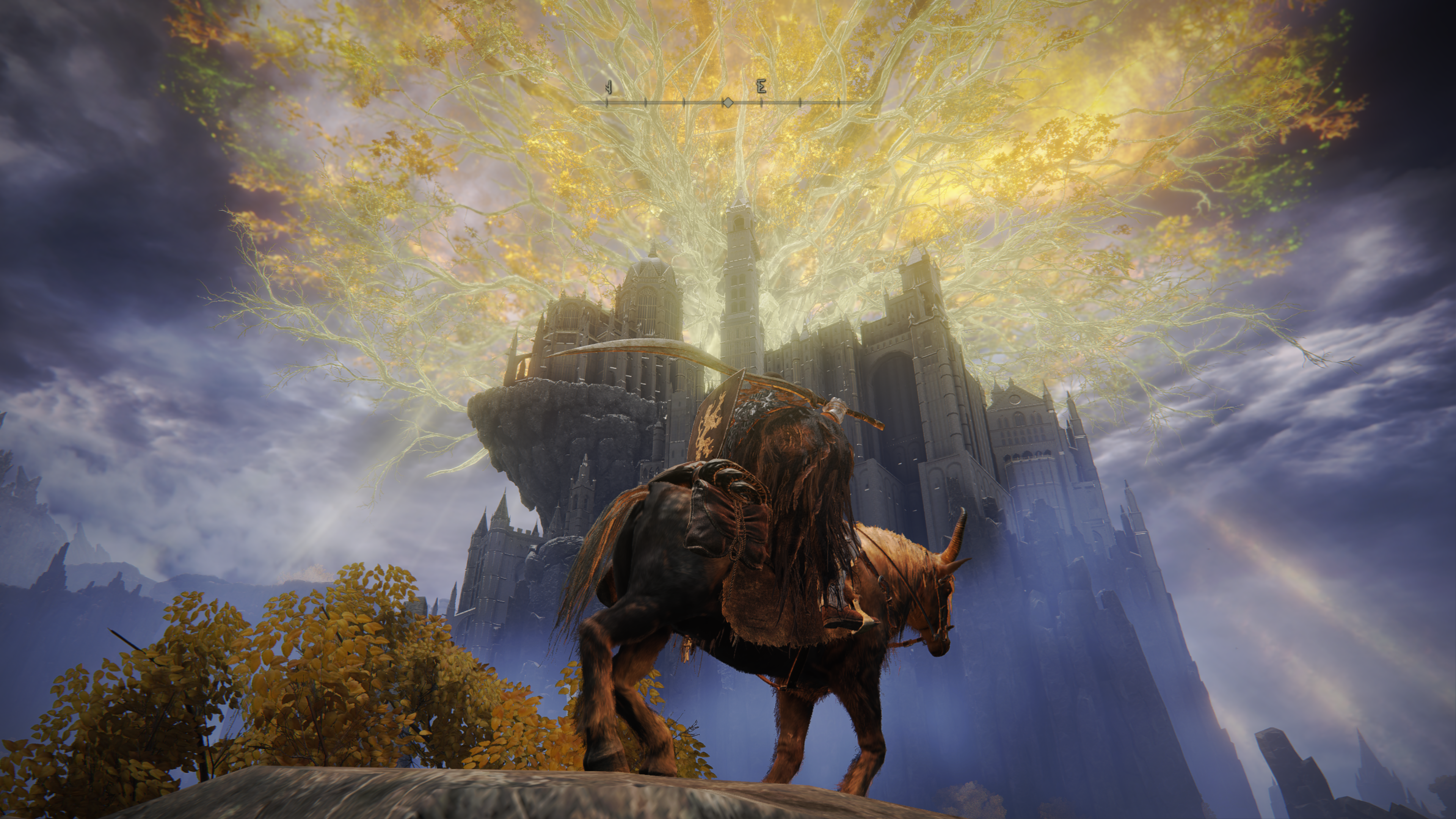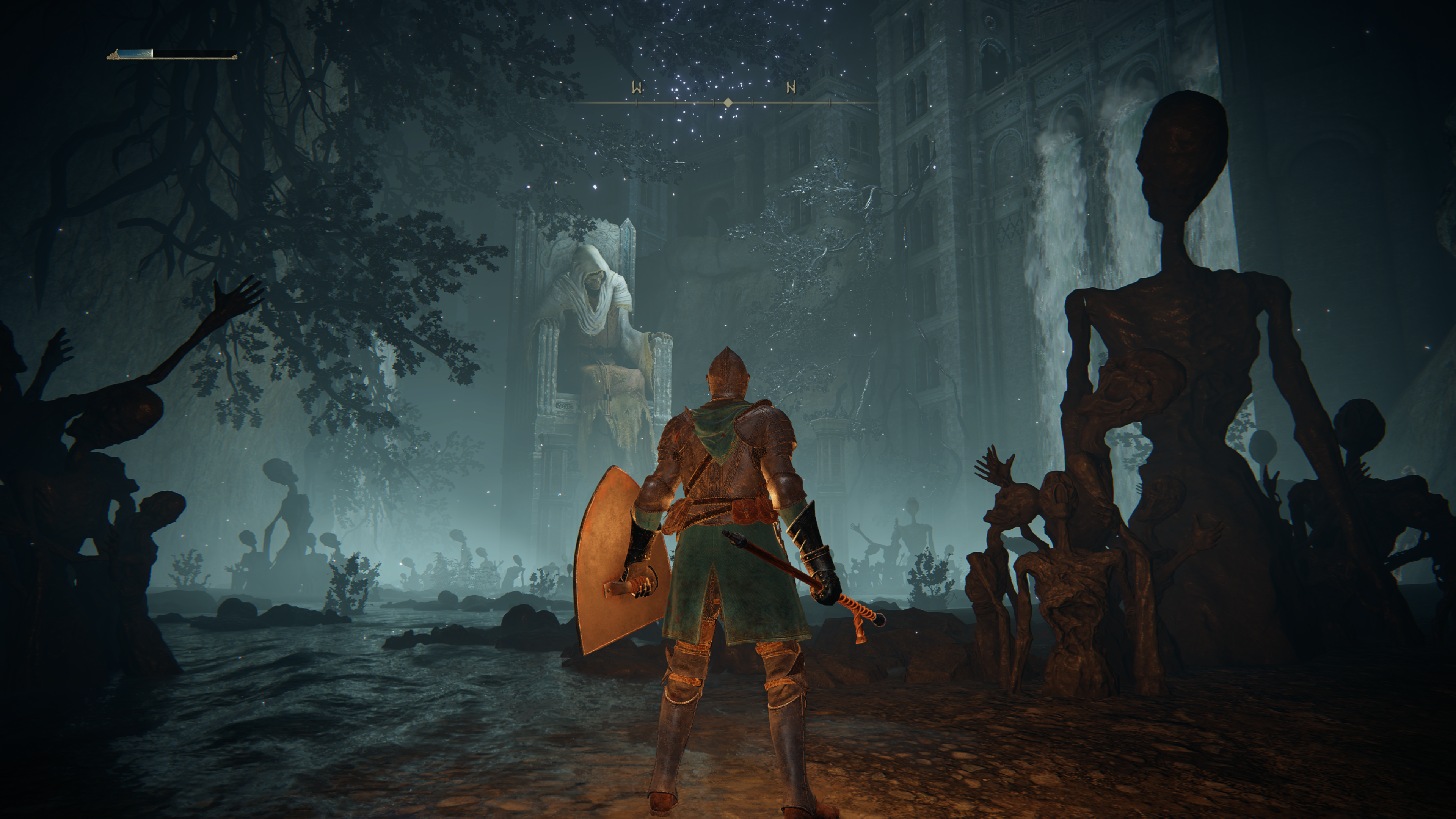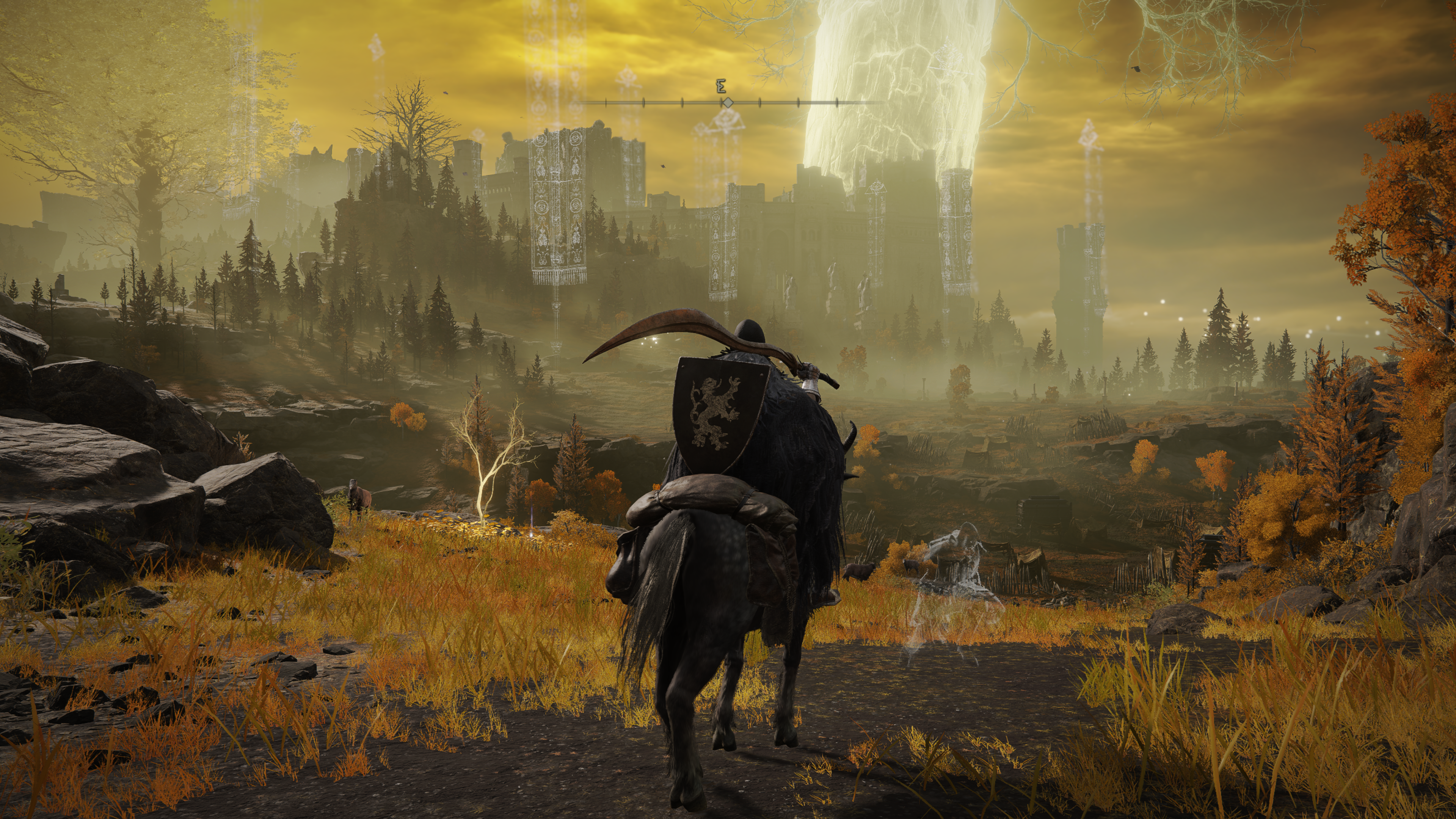Elden Ring has been compared to The Legend of Zelda: Breath of the Wild countless times now, both being sprawling open world adventures where exploration is encouraged through natural means instead of chasing icons and quest markers. From that perspective they are incredibly similar, both equally groundbreaking in how they curate player agency and ensure all decisions feel our own, like we’re shaping its landscape to very specific whims.
Yet they are so different, both in terms of overall tone and mechanical execution. Breath of the Wild is a relatively forgiving jaunt that encourages the occasional flirtation with combat alongside a number of varied puzzles through its Shrines. While small pockets of darkness exist across Hyrule, it is undeniably wholesome in the characters you meet and the environments you explore. The sequel seems set to continue this trajectory while delving into the supernatural much like Majora’s Mask. Compared to the hellish imagery of Elden Ring, it’s heaven.
The Lands Between is a nightmarish beauty, unafraid to have us uncover the darkest recesses of Hidetaka Miyazaki’s twisted vision of gothic high fantasy. Sprawling castles and gorgeous manors are juxtaposed with miserable swamplands and cavernous underground tunnels where the rotten are expected to wither away in misery. While pockets of hope splinter through the cracks, Elden Ring expects you to grow fond of a world that has long been lost to damnation.
You are little more than a voyeur pilfering through the wreckage, taking whatever spoils you can while trying to piece together what brought this realm to its knees. The Tarnished’s overall goal is a far nobler one, but how you choose to pursue it and whether it even matters is entirely up to you. Some might choose to conquer the Five Lords and emerge as a saviour of this land, while others could ignore their destiny altogether and murder them in pursuit of unparalled riches. Like so much of FromSoftware’s previous work, the thematic meaning behind its world and characters deliberately lack a concrete definition, something that is now baked into Elden Ring’s open world design. There is nothing else like it in the medium, and even compared to Breath of the Wild it teases ample possibilities.
Upon emerging into Limgrave you are greeted by a hooded NPC who provides a couple of cryptic hints about the journey ahead. You must gain access to The Roundtable Hold and make your way to Stormveil Castle where the first of many challenges await. A golden trail from each sight of Lost Grace is a loose marker on where you must go next, but this guidance can be ignored in favour of satiating your own curiosity - a temptation I wholeheartedly recommend you give into. Elden Ring comes alive when you’re riding freely through a field on horseback, peering at a landmark on the horizon you’re determined to reach. Chances are it’s hiding a boss battle or a subtle treasure waiting to be swiped, both things that will help build your character into a stronger version of themselves. I lost count of how many times my objective was derailed by an optional dungeon tucked away in a cliffside or a new region entirely that zapped away hours of my valuable time in an instant.
Elden Ring takes the natural sense of discovery pioneered by Breath of the Wild and gives it a more defined purpose. While Nintendo’s masterpiece often asked players to make their own fun using its procedural mechanics or hunt down all the shrines, Elden Ring feels infinitely more curated when the delights amidst its world are concerned. The Lands Between is disgustingly dense, like every little piece of scenery has a distinct purpose, placed in a way where even the most severe of scrutiny wouldn’t be able to undermine its place. It exudes an endless fascination while somehow managing to deliver a cohesive vision that pieces all of these disparate continents together into one melancholic whole.
FromSoftware enraptured millions with Dark Souls and Bloodborne because it didn’t just present us with a challenging RPG, but with fully constructed fantasy worlds that weren’t afraid to have us ask questions before immediately seeking out the answers. Dialogue is cryptic in its delivery while precious contextual details are hidden away in item descriptions or environmental storytelling that only the most hardened of fans will uncover. You can play through all of Elden Ring without understanding its wider narrative, but that isn’t a slight against it, but a compliment that reinforces how tightly packed its world building manages to be that you can be so easily transfixed without understanding so much of the underlying mythology. The Lands Between is marvellous, and a new benchmark for how developers can intertwine storytelling and mechanics into something that takes hold and never let's go.
During my review playthrough I saw countless storylines unfold that I discovered of my own volition. I saw characters perish and others triumph because of decisions I made, and I cannot wait for the game to release so that millions can embark on the same journey and uncover whatever possibilities I no doubt missed. Even today, I can revisit Dark Souls or Bloodborne and come across things I never knew existed. Elden Ring is the exact same experience but on a far grander scale, one that somehow embraces an open world format without losing any of the foreboding intimacy that makes these games so special.
In a genre that is so often defined by derivative filler and uninteresting storylines hindered by mediocre pacing, Elden Ring removes such obstacles by applying a layer of ambiguity across the entire landscape that only the player is able to remove. It’s so vast and uncompromising that I doubt anyone will be able to replicate its excellence for quite some time, but FromSoftware has shown how freeing open world experiences can be once again, eliminating the need for objective markers and tutorials by challenging and indulging us in equal measure. The Lands Between will go down in history as one of the greats.

-2.jpg)


